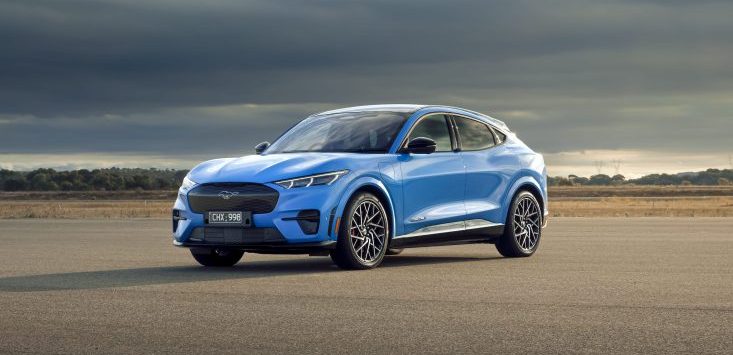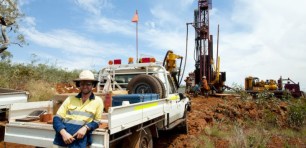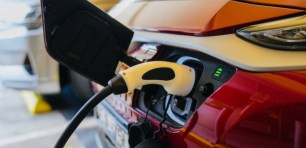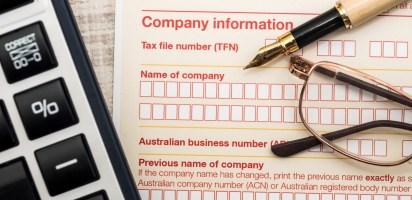
Ford Australia is bringing its fully-electric Mustang Mach-E SUV to the Australian market “later this year”, the first time the multinational car manufacturer has revealed an electric passenger vehicle is headed our way. But over 120 local government leaders say the mere trickle of new EVs is leaving the country in the automotive dark ages.
Online reservations are “opening soon” for the Mustang SUV, which comes in three variants — Select, Premium, and the GT, the latter of which is billed by Ford Australia as the fastest car it will sell in the Australian market. Punters can expect it to rival the Tesla Model Y and the Kia EV6 in its speed.
Looking under the hood, the Select variant boasts a 198kW/430Nm single electric motor, a 70kWh lithium-ion battery pack, and a Worldwide Harmonised Light Vehicle Test Procedure(WLTP) rated 430-kilometre driving range.
The Premium model will offer a more powerful 91kWh battery, with a 216kW, 430Nm electric motor giving drivers up to 600km worth before needing to charge the EV up again. GT has the 91kWh battery too — but with a 358kW, 860Nm motor, drivers will only get 490 km worth from a single charge.
President and CEO of Ford Australia and New Zealand Andrew Birkic said it was an “exciting time for electric vehicles in Australia” and that overseas plants boosting supply had allowed Ford’s range to hit our shores in “sufficient quantities”.
“We know Australians love that feeling of driving a performance car, and the Mach-E will mean they can enjoy that iconic Mustang freedom with all the benefits that an EV offers,” Birkic said.
But it’s been a long and winding road for Ford’s eventual EV offerings in the Australian market, some 13 years after the Mitsubishi i-MiEV was leased to fleet customers in local, state and federal government bodies around the country.
Calls for electric fleets to flood market
Today, over 120 mayors and councillors have released an open letter urging the Albanese government to demand car manufacturers to release EVs in the local market through the introduction of fuel efficiency standards, which cover 80% of the global market.
Get daily business news.
The latest stories, funding information, and expert advice. Free to sign up.
The standards, which have been introduced in New Zealand to much success, force car manufacturers to keep their emissions below a threshold or pay a hefty fine, seeing them turn their attention to designing and releasing more affordable electric models into the market.
Without the standards, Australia has become a dumping ground of “less efficient and more polluting vehicles, which limits the choices Australians have when purchasing a new car,” ACT Minister for Energy and Emissions Reduction Shane Rattenbury said.
Mayor of the City of Greater Bendigo Andrea Metcalf said the council’s goal to transition its fleets of more than 100 vehicles to electric by 2030 is strangled by “the limited options available in Australia at the right price point”.
Fleets make up 41% of all car sales each year, and Head of Advocacy at the Climate Council Jennifer Rayner points out they hit the second-hand market within three to five years — meaning more people who want an EV could snap one up for less.
Australian communities, businesses and government agencies are ready for zero-emission vehicles, Shoalhaven City Council councillor Tonia Gray added, and yet they only accounted for 6.5% of all new vehicle sales in the first quarter of 2023.
Tesla sales will double in 2023
It comes as Tesla continues to dominate the slim EV market in Australia. Of 17,396 EVs sold in the first quarter of the year, three out of five (some 10,407) were Tesla models, according to the Federal Chamber of Automotive Industries, meaning the EV titan has more than doubled its sales compared to the start of 2022.
Indeed in the first two months of this year, the Tesla Model 3, a sedan, was the third-most-popular car in Australia after the Toyota Hilux (which will be released as a hybrid in the Australian market soon) and the Ford Ranger.
It’s at least in part because Tesla is slashing the price of its range. The Tesla Model 3 RWD now costs $60,900 drive away — meaning it’s cheaper than the Volvo S60, the Lexus ES, and the BMW 3 Series — with further reductions possible thanks to the country’s various state incentives and rebates.
Interestingly, however, Tesla’s market share in the US is on a downward trajectory — since January 2022, Tesla’s share of the EV market tumbled from 72% to 54% as a slew of new EVs were released by its competitors.
As of 2022, some 47 EV models were on sale in the US, up from 33 in 2021, according to Axios. It could be a sign of things to come for Australia if it follows the US’s lead in introducing fuel efficiency standards.
The only victim, it seems, would be Tesla, which would be inundated by rival models hitting the domestic market from the rusted-on automotive brands Australians have long loved.
Handpicked for you

Electric utes are no longer the future — they are already here




COMMENTS